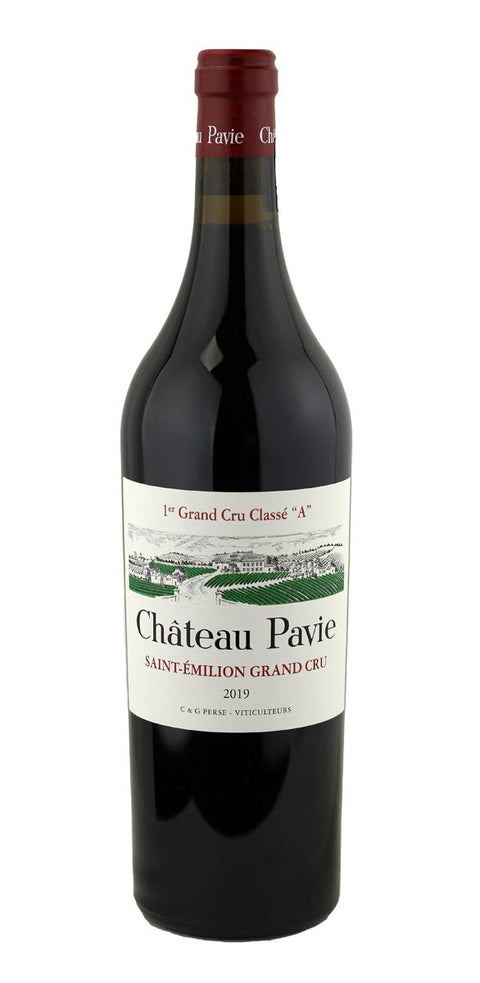
2019 Château Pavie Saint-Emilion Grand Cru, Bordeaux, France
Deep garnet-purple in color. It bursts with expressive blackberries, boysenberries, and ripe plum scents plus hints of dried mint, cast-iron pan, and wood smoke. Full-bodied, rich, and powerful in the mouth, it has amazing tension and velvety tannins, finishing very long.
There are 6 units left in stock.
ABOUT THIS WINE
Château Pavie is a First Classified Grand Cru 'B' of Saint-Emilion.
A blend of 78% Merlot, 20% Cabernet Franc, and 2% Cabernet Sauvignon. The wines are aged in barrels renewed for 80% during 16 to 20 months.
The 15-hectares of vines are located on the Côte Pavie, near the vineyards of Château Pavie, Château Pavie-Decesse and Château Troplong Mondot. There are nine different types of soil, with different variations of limestone and clay. Château Pavie Macquin has vineyards that are planted with 80% Merlot, 18% Cabernet Franc, and 2% Cabernet Sauvignon. The vines tend to ripen a bit later here, and the grapes are optically sorted before vinification at Château Pavie Macquin.
ABOUT THIS PRODUCER
Great figure of St. Emilion in the early twentieth century, Albert Macquin left an indelible mark on the estate that was named after him. He is responsible for the use of grafted plant, which has eradicated the ravages of phylloxera. Perfectly situated on the plateau of Saint-Emilion, at an altitude ranging from 75 to 100 meters, the vineyards of Pavie Macquin covers 15 hectares in one piece. Its neighbors are illustrious Pavie south and Troplong Mondot west.
The grandchildren of Albert Macquin now owners of the estate have appointed Nicolas Thienpont manager of Pavie Macquin in 1994. He is the advised by Stéphane Derenoncourt, who already took action on the estate several years before. The duo works beautifully.
A map of the vineyard has been established to distinguish about nine types of soil, for each of which specific methods of viticulture and winemaking have been edited. Inspired by the principles of biodynamics, they forbid the use of herbicides and are based on the use of biological processes such as compost. Few modern methods are used too, such as micro-oxygenation, which consists of an oxygen supply to certain key stages of winemaking. The aromas of the wine are enhanced.
During the ten-year review of the classification of St. Emilion in 2006 Pavie-Macquin was promoted the rank of 1st Grand Cru Classé B, a privilege it shares with only 12 other wines. While this ranking is currently suspended, fans are not wrong: Pavie-Macquin produces powerful and aromatic wine. Very harmonious, they offer velvety tannins and display explosive aromas of black fruits in the mouth. Voluptuous, perfectly balanced and tailored for a long cellaring, they reach their peak within 10 to 12 years after the vintage.
